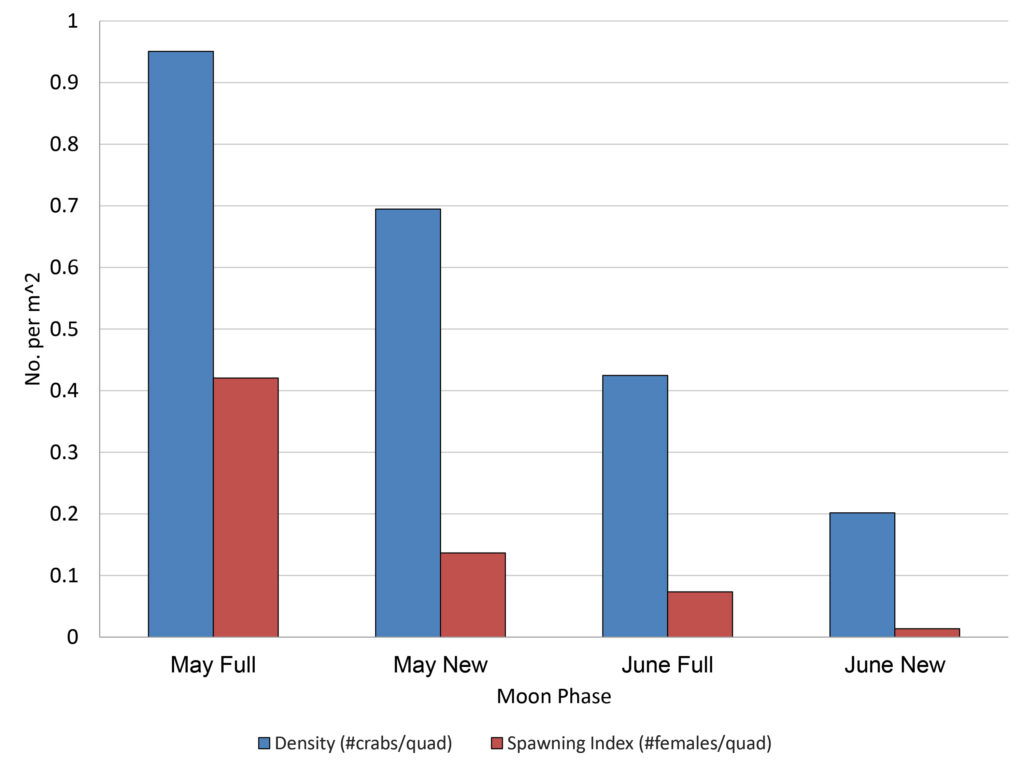 Every spring, in May and June, horseshoe crabs move shoreward to reproduce on our local beaches. To monitor their populations, volunteers on the South Shore gather data every year to determine if current regulations are helping to maintain or increase the number of crabs in the bay. We have been monitoring horseshoe crabs since 2008 in Duxbury Bay. Horseshoe crabs are harvested for bait for the whelk fishery as well as for their blood, which contains a compound that the biomedical industry uses to test sterility of injectable drugs.
Every spring, in May and June, horseshoe crabs move shoreward to reproduce on our local beaches. To monitor their populations, volunteers on the South Shore gather data every year to determine if current regulations are helping to maintain or increase the number of crabs in the bay. We have been monitoring horseshoe crabs since 2008 in Duxbury Bay. Horseshoe crabs are harvested for bait for the whelk fishery as well as for their blood, which contains a compound that the biomedical industry uses to test sterility of injectable drugs.
In 2023 the surveys fell generally on the first and third weeks of May and June, when the full and new moons occurred. The first round of surveys in May had the highest density of crabs and the highest spawning index (females per m2), with a gradual decrease with each subsequent survey. (Fig.1) Compared to previous years, crab density in 2023 (0.59 crabs/m2) was slightly lower compared to the 5-year rolling average (0.77 crabs/m2). The spawning index was close to the 5-year average. (Fig.2)
Horseshoe crabs have been in the news this year due to changes in the state regulations as well as increased advocacy for stopping the horseshoe crab bait harvest and more tightly controlling the biomedical harvest. For the first time, there is a separate biomedical quota of 200,000 crabs for horseshoe crab harvest. The bait harvest quota has been reduced from 165,000 to 140,000. Changes in the biomedical regulations were prompted by an additional facility for bleeding horseshoe crabs starting work in the state.
Horseshoe crab survey photo by Beth Howard.


